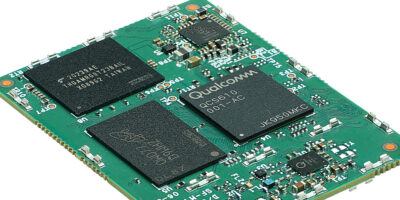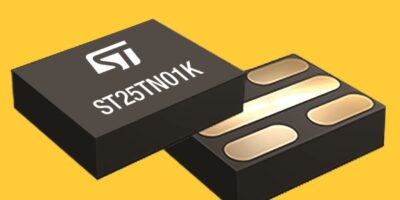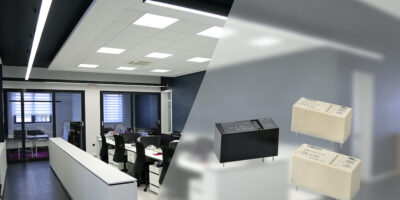A system on module (SoM) by Smart Wireless Computing, the Inforce 6403, is based on Qualcomm’s QCS610. It enables advanced visual computing for AI-enabled surveillance camera and edge appliances, connected body cameras, smart displays, and other IoT wireless network edge devices, says the company.
Engineers can use the Inforce 6403 SoM to bring on-device AI and machine learning (ML) to cameras and displays, while enabling multiple connectivity options for critical data transfer.
It supports 4K UltraHD (HEVC) video capture and playback to enable video analytics applications integrated into smart cameras, such as face detection and object tracking. High-bandwidth connectivity options include Ethernet RGMIII, 802.11nac Wi-Fi, Bluetooth 5.x, USB-C, and LTE Cat 4 via a carrier board.
The compact LGA package measures just 43 x 32.5mm (1.69 x 1.28 inches), allowing it to integrate into camera housings and systems, particularly in applications where a soldered connection is required for a rugged end-product.
The module comes with a software package that includes integration with Google Firebase and a sample application to upload or stream videos in real time. Google Firebase is a unified backend-as-a-service (BaaS) platform for mobile and web developers that integrates with other Google services.
The Qualcomm QCS610 SoC integrates a Qualcomm Kryo 460 CPU with independent efficiency and power clusters. There are also dual 14-bit Qualcomm Spectra 230 image signal processors which support up to 24Mpixels for simultaneous concurrent cameras capturing sharp images.
The Qualcomm Adreno 612 GPU provides efficient rendering of advanced 3D graphics.
The SoC also leverages Qualcomm Hexagon Vector eXtensions (HVX) on Hexagon 685 DSP enable accelerated machine learning through deep neural network models and with advanced Qualcomm neural processing engine SDK support and TensorFlow Lite.
A secure processing unit enables secure boot, DRM and content protection for a secure environment for the camera system.
The Inforce 6403 SoM incorporates enhanced EMI shielding for RF noise protection, while also improving heat dissipation to improve performance.
A reference design based on the SoM is available.







